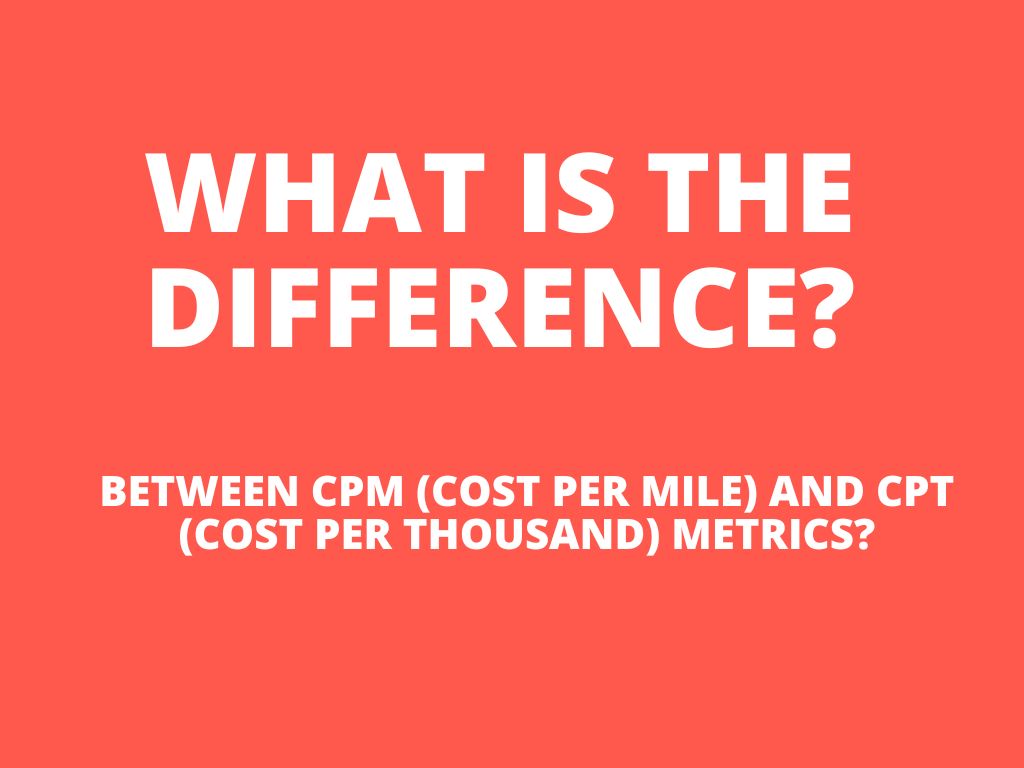
What is the difference between CPM (cost per mile) and CPT (cost per thousand) metrics?
CPM (cost per mile) and CPT (cost per thousand) represent the same model – the price for a thousand impressions. This marketing term refers to the cost of 1,000 display instances of an advertisement on a single webpage. If a website publisher charges a CPM of $2.00, it implies that the advertiser must pay $2.00 for every 1,000 views of their advertisement.
An impression is a metric that counts the number of displays of an advertisement or audience engagements the ad receives.
CPM is one of several methods used to determine the price of online advertising; other methods include cost per click (CPC) and cost per action (CPA).
Among the drawbacks of using CPM are incorrect counting of impressions due to duplicate views, ads that do not load, and ad fraud.
Understanding Cost Per Thousand Impressions (CPM)
The cost per thousand (CPM) is the most common method of pricing web advertisements in digital marketing. This method is based on impressions, a metric that counts the number of digital displays or engagements of a specific advertisement. Impressions are also referred to as “ad views.” Advertisers pay website owners a set fee for every thousand ad views.
Click-through rate (CTR) measures whether an advertisement was clicked on and represents the percentage of people who saw the ad and clicked on it. Advertisers often measure the success of a CPM campaign using CTR. For example, an advertisement that is clicked by two users out of every 100 views has a CTR of 2%. The success of an advertisement cannot be measured solely by CTR because an ad that a reader views but does not click on can still have an impact.
CPM vs. CPC and CPA
CPM represents one of several methods used to price advertising on websites. Another pricing model is cost per click (CPC), where the advertiser pays each time a website visitor clicks on an advertisement. Cost per action (CPA) is a method where the advertiser only pays each time a website visitor makes a purchase after clicking on the ad.
Different pricing methods are more suitable for some advertising campaigns than others. CPM makes the most sense for campaigns aimed at increasing brand awareness or conveying a specific message. In such cases, CTR matters less because exposure due to the advertisement being placed in a visible location on high-traffic websites helps promote the brand name or the company’s message, even if visitors do not click on the ad.
Website publishers like CPM advertising because they get paid for mere views of the ad. However, as CPM rates are low – the aforementioned rate of $2.00 is relatively standard – websites need high traffic to earn decently from CPM ads. Rates for social media advertising, however, tend to be higher and can vary depending on the platform. For 2021, the average CPM rate for social media advertising on Facebook and Instagram was almost $9, while the average CPM rate for LinkedIn and Twitter was about $6.50.
Impressions vs. Website Visitor Count
It is possible that the number of ad impressions differs from the number of visitors to the websites on which the ad is displayed. An ad may get placements in two locations on a webpage, such as a horizontal banner across the top of the page and a vertical sidebar banner next to the page text. In such a case, the advertiser pays for two impressions per page view.
Critique of the CPM Model
Criticism of CPM often stems from issues with accurately counting impressions. Some advertisers question whether they are being charged fairly. Problems arise in connection with duplicate views from the same visitor or internet bots (short for “robots”) that visit pages and distort the total impression count. Also, if an ad does not load or loads incompletely, these ads should not be counted as impressions. Ad fraud can occur when a dishonest site owner uses automated scripts that send traffic to the pages to increase the impression count.
Was this article helpful?
Support us to keep up the good work and to provide you even better content. Your donations will be used to help students get access to quality content for free and pay our contributors’ salaries, who work hard to create this website content! Thank you for all your support!
Reaction to comment: Cancel reply